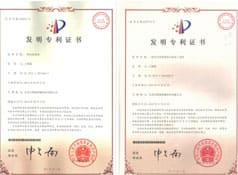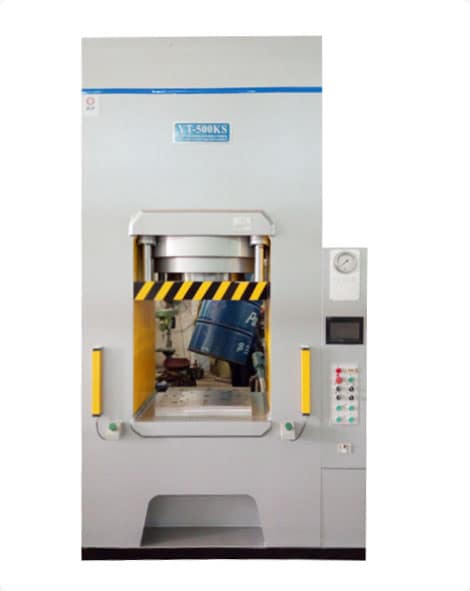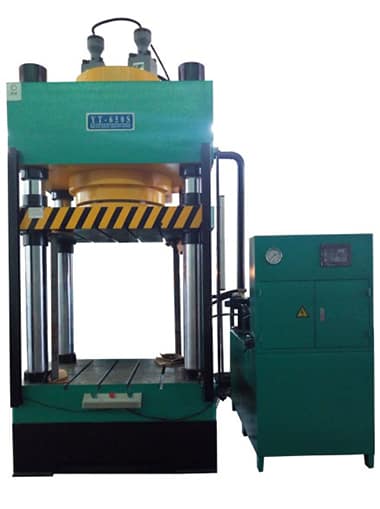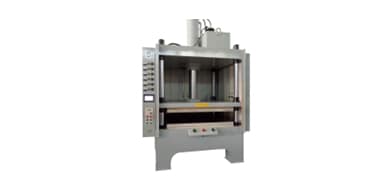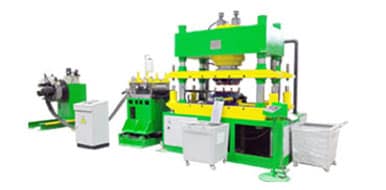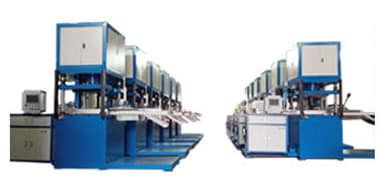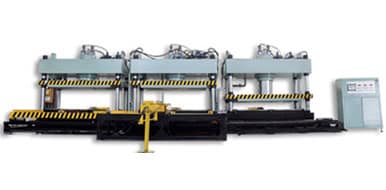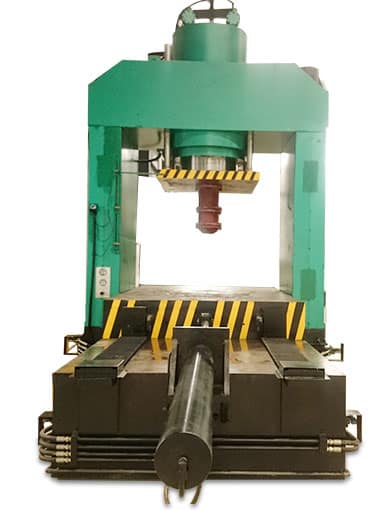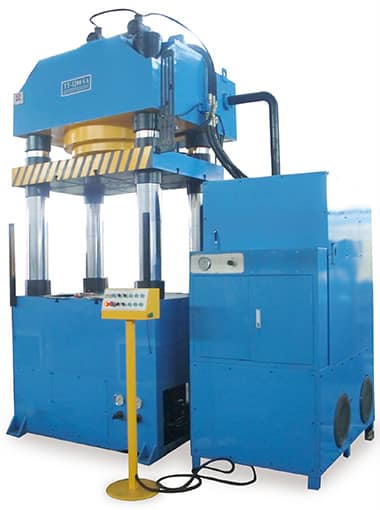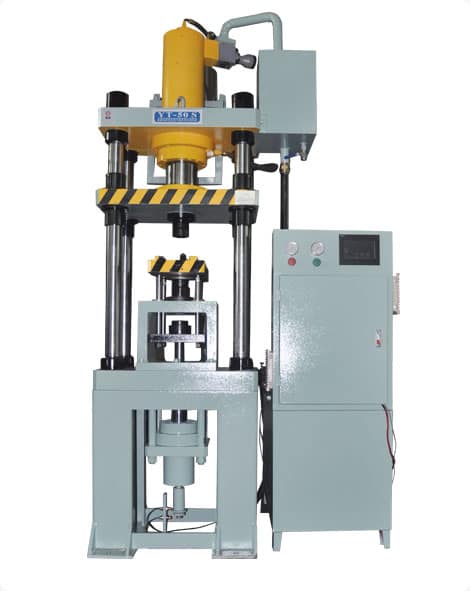How to Make Almond Oil With Hydraulic Press
time:2023-10-30 views:(点击 908 次)
Almond oil is a well-loved skincare ingredient, offering essential lipid support for maintaining skin barrier function and repair, as well as being an effective facial moisturizer.
Traditional extraction techniques for almonds involve either using a hydraulic press or screw press and extracting oil at different temperatures and pressure settings before evaluating their physical-chemical and organoleptic properties.
1. Choose the Almonds
Finding high quality almonds is essential to producing nutritious almond oil of high-grade quality. Almonds are an incredibly versatile ingredient and can be used in numerous applications, while there are two kinds of almond oil available - refined and unrefined varieties; refined variety boasts higher smoke point storage convenience while unrefined keeps more nutrients intact - both may serve various health purposes depending on individual requirements and taste preferences.
When selecting almonds, choose ones free of dirt and debris, sorting based on size to help achieve more uniform almonds in your final product. Almonds should be stored in a cool, dark location to avoid mold growth; to monitor these temperatures accurately use a thermometer/hygrometer combo as this will keep an eye on both temperature and humidity levels in your storage area; additionally keep almonds separate from other food items or ingredients to prevent cross-contamination that could potentially cause allergens.
To create almond oil, almonds must first be placed into a cold press machine and crushed under pressure, with any residual solid particles removed by filtering before being stored ready for use - either manually or using an electric cold-press machine.
Screw and hydraulic pressing systems both produce almond oils with low levels of free fatty acid and peroxide that are ready for consumption without further processing, though performance differences between systems affect its quality and composition in terms of physical/chemical as well as organoleptic considerations.
Selecting the optimal almonds for your hydraulic press is key to producing high-quality, nutritious oil products. Ideal almonds should feature soft texture, light color and pleasant nutty aroma; choosing an inferior variety could result in inferior final products - so do your research prior to investing in an almond oil machine.
2. Put the Almonds in the Hydraulic Press
Almonds are an easy and delicious way to add texture and flavor to any dessert or salad, delighting your senses with every bite! Pairing well with fruits such as berries or citrus segments, these versatile nuts offer the ideal balance between sweet and savory foods - plus they contain essential nutrients that keep you feeling full!
Even though almonds may all appear similar at first glance, each variety comes in various sizes and shapes with its own set of characteristics that make it suitable for various uses. Comuna almonds offer delicate flavor profiles while Mamra varieties boast stronger, bolder tastes - all important factors when processing nuts for consumption. No matter which variety is selected for processing purposes. To ensure their safety before processing begins, always ensure your almonds are clean and dry prior to processing them.
Once you've selected the appropriate almonds for your project, the next step should be crushing and pressing them using hydraulic pressure. This cold extraction method should help preserve their pleasing sensory qualities while preventing oxidation and nutrient loss.
almond oil can add deliciously sweet treats and savory dishes, as well as being used for hair and skin care. Packed with antioxidants, vitamin E and essential fatty acids that support hair and skin health while improving texture as well as offering various other health benefits like protecting against heart disease and maintaining regular blood sugar levels.
Almond oil stands out as having a lower smoke point compared to other oils, meaning it is less likely to burn when heated, making it the ideal choice for sauteing and stir-frying food. Almond oil also adds aromatic sweetness to salad dressing recipes!
Comparatively, oil extracted by HP showed more natural aroma and peroxide value owing to variations in thermal conditioning of almond kernels. As the results of this study demonstrate, almond oil quality largely depends on both its extraction system and conditions as well as nutritional characteristics of defatted almond flour.
3. Press the Almonds
Almonds are one of the world's most widely cultivated nuts, boasting significant quantities of oil that can be used both culinary and cosmetic purposes. Extraction methods range from solvents (which produce maximum extraction yield but require further refinement) to cold extraction under pressure - which provides ready-to-consume virgin oils while still retaining aroma and sensory qualities associated with raw almonds.
Two systems for extracting almond oil were evaluated; these being the screw press (SP) and hydraulic press (HP). Both processes require prior thermal conditioning of almond kernels in order to maximize extraction yields; however, their influence on quality/composition characteristics of the resultant oils remains unclear.
An extensive multifactorial experiment was performed to investigate the influence of various operational parameters, including rotation speed and temperature of the heating ring, on almond oil production. Generally speaking, higher rotation speeds and lower heating ring temperatures led to greater oil yield; however, results of this research also demonstrated that specific combinations were optimal in producing organoleptically excellent almond oil products.
Noting the nutritional value of almond flour produced through these presses as a byproduct, with its high protein content making it suitable for functional food development.
Almonds can be used to create many delicious dishes. From cold salads to adding subtle nutty notes on grilled or roasted food, almonds add delicious crunch. In addition to culinary uses, almond oil provides an alternative source of cooking fats; packed full of healthy unsaturated fatty acids and vitamins, almonds are packed full of nutritional goodness making them the ideal ingredient in a nutritious diet. Almond oil should be stored properly in the refrigerator to remain fresh for approximately one month after opening it up for use!
4. Remove the Almonds
Almond oil is a type of edible oil derived from almond tree kernels (Prunusdulcis). This versatile oil can be used as an excellent replacement for traditional cooking oils due to its lower saturated fat content and higher monounsaturated fatty acid concentration, along with high levels of vitamin E for keeping skin supple and healthy; in fact, almond oil has also been proven to help treat various skin conditions like eczema and psoriasis.
Almonds are an extremely versatile food item, and can be used in numerous recipes. As well as being delicious treats, almonds provide essential vitamins and minerals as well as dietary fiber. You can eat raw or cooked. Almonds typically come sold with their shell intact but some varieties may also come blanched or unshelled depending on the seller. Once removed by boiling or crushing, their kernel is separated and then toasted to create their distinctive taste.
Nuts typically contain roughly half their weight in an oil free of starch, making almonds one of the highest oil-yielding seeds ever known. Sweet almonds produce about 50% while bitter ones yield up to 60% (Grieve, 1995). Oil produced from these nuts is generally cold-pressed in order to preserve its natural chemical composition and therapeutic benefits.
Employing a pressure extraction system allows for the production of premium almond oils with low levels of free fatty acid and peroxides that do not need further processing, although preheating of almond kernels to maximize extraction yields and quality may be required to achieve maximum extraction yields and quality.
This study investigates the effects of preheating on the physical, chemical and organoleptic properties of almond oils produced from both systems. Eighty consumers conducted sensory evaluations evaluating color, odor and taste characteristics. Results show that roasting treatments have an direct impact on sensory characteristics associated with almond oils produced from either system due to changes in volatile compound distribution patterns.
Based on the roasting treatment chosen, almond oil produced has different organoleptic and nutritional qualities. The results of this research provide important information that could lead to new almond oil specialty varieties being created.
Link to this article: https://www.ihydraulicpress.com/nsn/5179.html
Hot Articles
-
How to Make Your Own Hydraulic Jewelry Press
Hydraulic presses are one of the most useful tools in any metalsmith’s toolkit, as you can use one to coin, draw, punch and shape metal piec……
-
How to Make Dies for Hydraulic Presses
Hydraulic presses are powerful machines capable of performing an array of metalworking tasks. From punching out identical pieces quickly and produ……
-
How Much Does a Hydraulic Press Weigh?
Hydraulic presses are powerful machines that utilize pressurized fluid to generate force. There are various kinds of hydraulic presses, each one o……
-
How to Make a Hydraulic Apple Press
An effective apple press is key for producing large yields of juice and cider, without seeds, skins or pulp in its resultant product. Hydraulic pres……
-
How to Make a Hydraulic Press Model
There are certain items that should not be put into a hydraulic press, which would either damage it irreparably or break apart into pieces that po……
-
How to Make a Homemade Hydraulic Press
Hydraulic presses are highly effective tools capable of shaping metals and other materials with immense force, serving many industries as dependable……
-
How to Make a Mini Hydraulic Press Machine
Hydraulic presses are amazing machines, but can be costly or time consuming to build or purchase. So it’s fantastic that there’s now an ……
-
How to Make a Hydraulic Forging Press
With the right materials and knowledge, anyone can create their own forging press. A forging press creates mechanical force using toggle mechanisms ……
Latest News
-
How to Make a Hydraulic Press Model
Hydraulic presses use liquid under pressure to exert force on an anvil and die, making it easy to crush all sorts of items. Individuals looking to g……
-
How to Make a Wooden Hydraulic Press
Woodworkers who lack an expensive hydraulic press can still create an effective homemade wooden press that provides adequate pressure for bonding bo……
-
How to Make Hydraulic Press Plates
Hydraulic presses are machines which use pressure to change the shape of metal and plastic objects, including bending, stamping, and cold extrusion ……
-
How to Make a Knife Using a Hydraulic Press
Blacksmiths commonly employ hydraulic presses as tools. Consisting of two interlinked cylinders: slave and master, when piston pressure is applied……
-
How to Make a Hydraulic Tincture Press
Tinctures are herbal medicines made by submerging decarboxylated herbs in high proof alcohol for several hours or overnight, then pressing them th……
-
How to Make a Hydraulic Press at Home
A hydraulic press is an incredible machine that employs Pascal’s Law to generate immense forces. Consisting of two communicating cylinders &……
-
How to Make a Hydraulic Press Juicer
Hydraulic presses use extreme pressure to extract juice. Fruit and vegetables must first be chopped or ground into a fine mass before being placed……
-
How to Make a Hydraulic Hash Press
Hydraulic presses offer an effective method for creating quality hash. Not only are they quieter and more cost-effective than pneumatic models, they……


